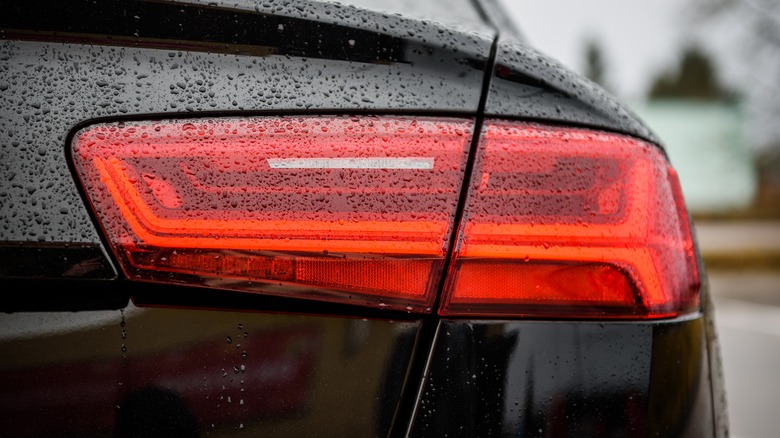Why Cars In The US Have Red Turn Signals (But Other Countries Use Amber)
If you've spent time driving overseas, you may have noticed something unusual: many cars use yellow-orange turn signals instead of the red ones that are common on vehicles in the US. Just like you probably don't spend much time thinking about why turn signals make a clicking sound, you might have brushed off the color variation as a regional difference that didn't mean a whole lot. But you might be surprised to find out that there's a lot more to it than that. The color of a car's turn signals is actually tied to safety regulations, visibility concerns, and manufacturing choices. In the US, federal safety standards mandate that turn signals be either red or amber, giving automakers a bit of leeway when designing and manufacturing vehicles for the US market.
However, go overseas and things change, like in Europe, where the Economic Commission for Europe requires turn signals to be amber, as they're believed to be more visible and reduce rear-end collisions. Studies have backed that up, including one conducted by the National Highway Traffic Safety Administration that found amber turn signals could reduce the odds of being rear-ended by up to 28% in some cases. Even with these findings, US regulators haven't mandated that car manufacturers install amber turn signals in American vehicles. As a result, many cars in the US, especially domestic models, still come equipped with red turn signals.
US regulations allow red rear turn signals, but most international standards don't
When it comes down to it, the reason you'll see red turn signals in the US and not in many other parts of the world is because US regulatory bodies allow them. In the same way that laws differ from one country to another, vehicle standards do too, something that can be as puzzling as some of the strange driving laws on the books in different parts of the country, with the difference being that unlike some of those obscure local laws, the color of a car's turn signals is regulated at the national level by the Federal Motor Vehicle Safety Standard (FMVSS) 108, which says both red and amber turn lights are acceptable.
The FMVSS 108 gives vehicle manufacturers wide latitude in deciding whether to use red or amber turn lights when designing and producing lighting assemblies. While there's no clear explanation for why the FMVSS 108 hasn't been changed, there's speculation that it might have something to do with red lamps simply being cheaper to use or the fact that the process for changing the regulations would be cumbersome and time-consuming. Another reason for the red lights in the US is that they're easier for automakers to produce, and some think they look better than amber lights.
International Standards like UN Regulation No. 148 – Light Signalling Devices clearly state that turn signals should be amber while brake lights should be red. In countries where these standards are followed, you'll see amber turn signals, unlike the red ones in the US. Because of this regulatory gap, the same vehicle model, like the BMW 3 series, may come with amber signals overseas but red ones in the US.

